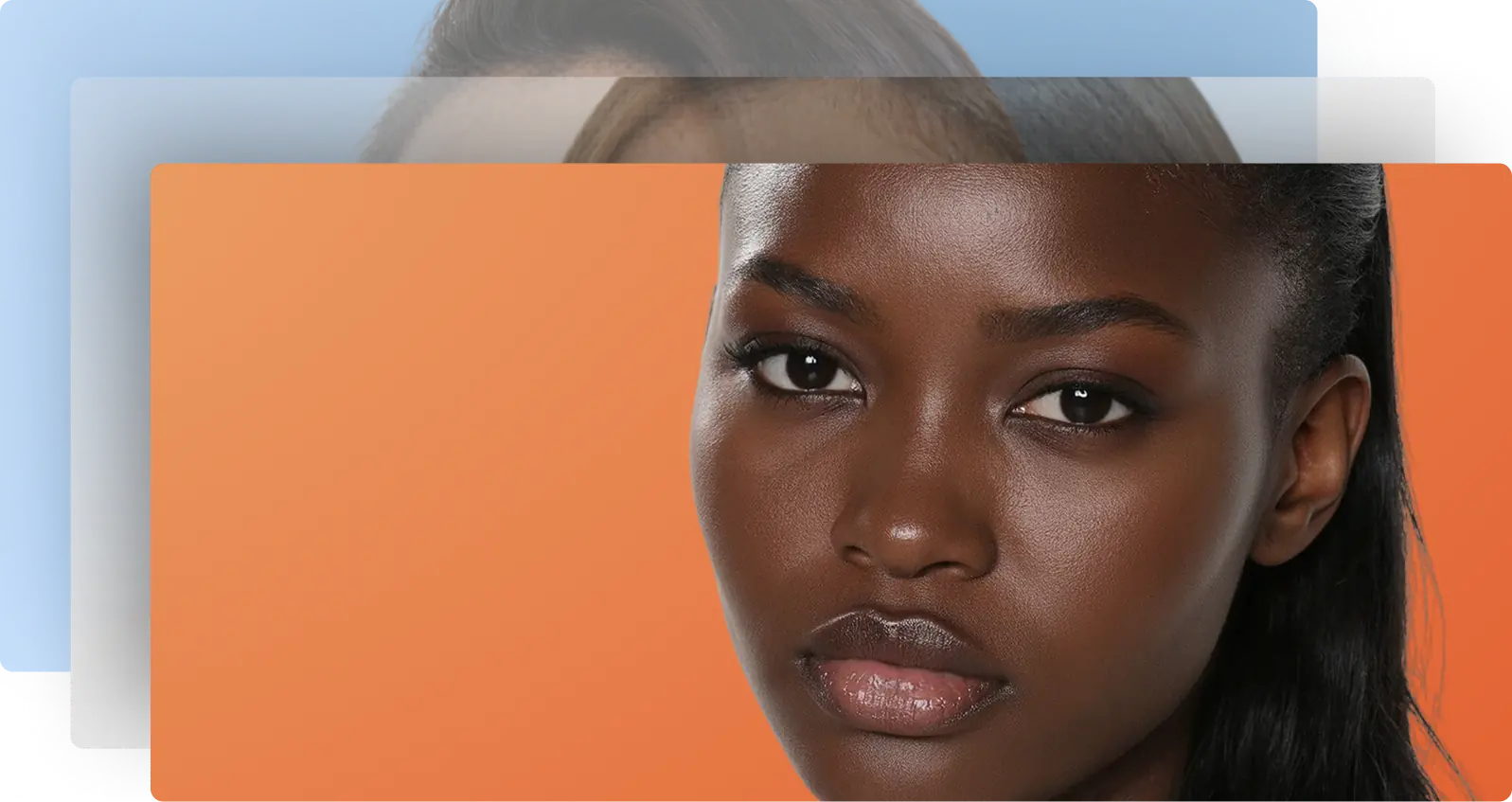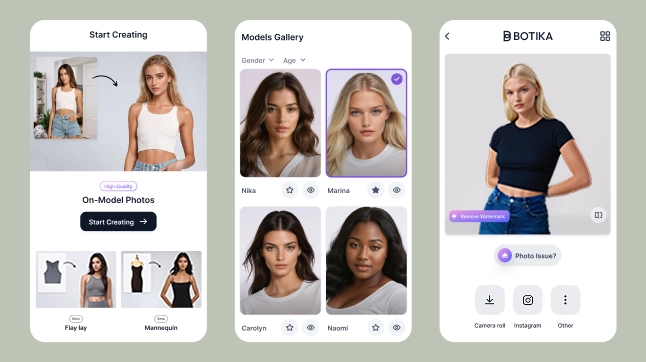The new era of AI powered fashion
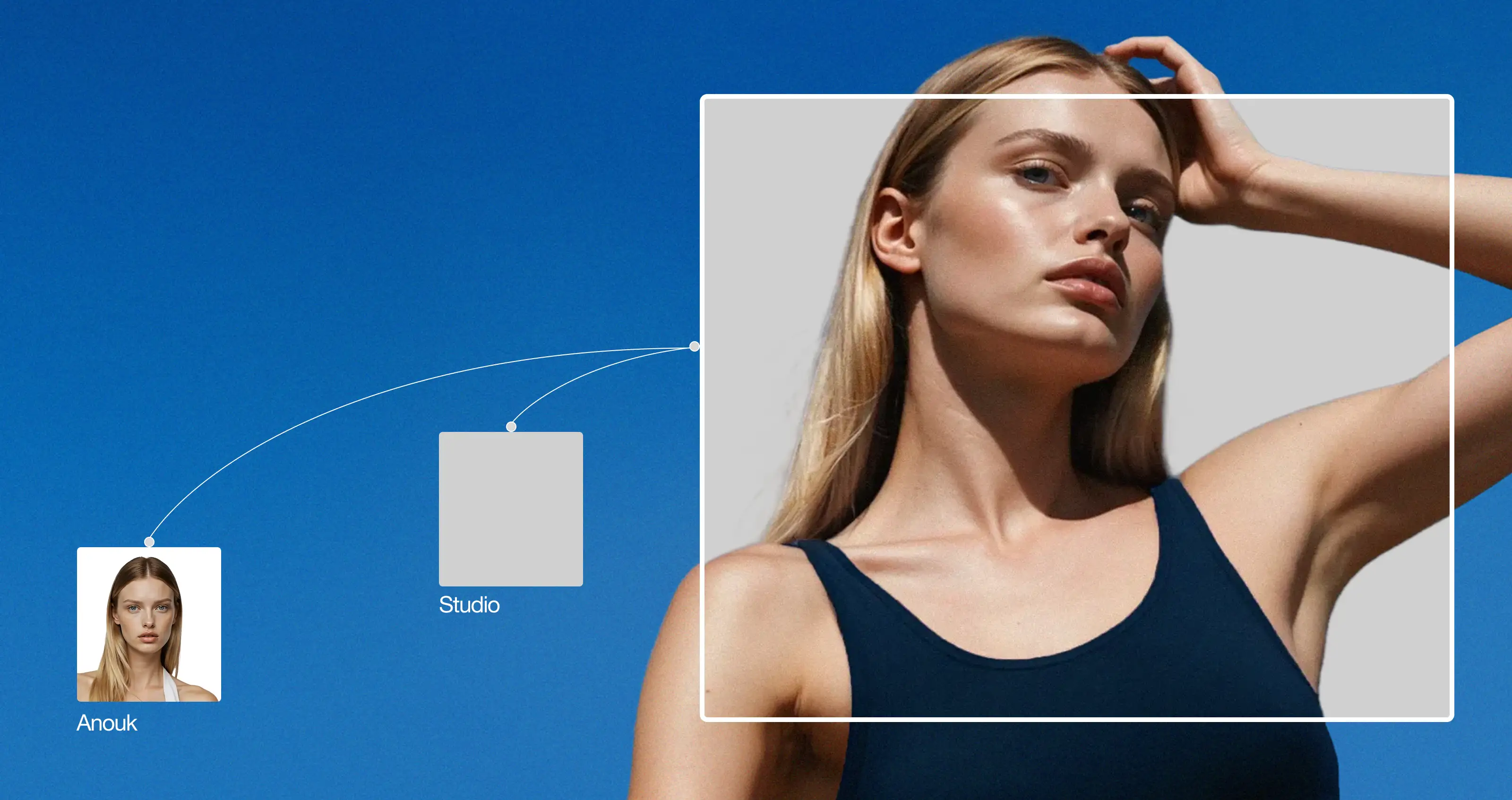
We all love a trend. And right now, one of the biggest trends in fashion content is this: AI powered fashion creation. But there’s a big difference between “we threw a prompt at a text-to-image tool and got something kinda OK” and “we have a production-ready workflow that reliably turns your product catalog into on-model visuals, at scale, on-brand, consistent and high quality.”
We want to pull back the curtain and show you how the AI powered fashion workflow is shifting from prompt-play to product-ready visuals and why it matters for fashion brands that need reliability and scale.
The prompt-based era: Exciting but inconsistent AI powered fashion
Let’s take a moment to acknowledge where we started. For many brands and creators, the “AI powered fashion workflow kicked off with prompt-based tools. You type something like:
“a female model wearing a red wrap top, urban streetwear background, high-resolution, natural light”
… hit Generate, and you get a visual. Sometimes it’s good. Often you get weird arms, strange fabric drapes, logos that are messed up or poses that don’t match your brand aesthetic. As I wrote in another blog post on how we create our AI fashion models:
“If you’ve tried using text-to-image tools for fashion visuals … you’ve probably seen the issues: weird hand placements or extra fingers; distorted logos or patterns; clothes that don’t follow real-world physics.”
The big limitation is losing consistency and control. Every output from a generic AI powered fashion prompt-based model is slightly different; you have to iterate, fix, compensate. For a one-off social post this might be fine. But for a full catalog launch, or 1000 SKUs or seasonal refreshes it becomes chaotic.
And when you rely on those tools for scale, you hit these roadblocks:
- Variability of quality
- Little control over model type, pose, lighting or background
- Brand aesthetic drift – some images feel “off-brand”
- Time spent cleaning up, rejecting and re-doing images
- Risk that the garment is misrepresented (folds, texture, drape all don’t match reality)
In short, AI powered fashion prompt-based tools were a fun experiment, but not yet a workflow that fashion brands could depend on.
What brands really need: Reliability + scale
When you’re a fashion brand, no matter your size, what you really need from your visual production engine is:
- Predictability
When you upload X garments, you want output that meets your quality bar, not a gamble. - Consistency
Across models, backgrounds, lighting, brand aesthetic – everything should align. - Speed
Launching new collections, refreshing images, supporting ad campaigns, you want a fast turnaround. - Cost efficiency
Traditional photoshoots (models, studios, stylists) are expensive, slow and hard to scale. - Brand control and rights
You need to own your images, ensure they are aligned with your brand values (diversity, representation, ethics) and avoid legal or ethical risk. - Scalability
The ability to handle many SKUs, many visuals, many contexts (web, ads, social) without exploding cost or logistics.
When you evaluate an AI powered fashion workflow, ask: “Does this system deliver on all those demands?” Because if one is weak (say consistency or speed), you’ll end up back in the same bottlenecks as a photoshoot.
<blogcta>
Enter pre-trained, brand-ready AI powered fashion tools
This is where a platform like Botika comes in. We built our system not as a generic “type a prompt” engine, but as a purpose-built AI powered fashion workflow for brands. Here’s how we turned AI from a creative experiment into a production-ready tool for fashion brands.
- Instead of starting from “a random image generator + your text prompt”, we start from your product photo (flat lay, mannequin or on-model) and a curated library of brand-ready AI fashion models (diverse body types, poses, ethnicities, consistent aesthetic).
- We built our own foundation models trained on fashion-specific data: garments, fabric drape, poses, fit, movement. We are not just using “general purpose” diffusion models.
- We give you a workflow: upload product shot → pick model(s) → pick pose/background → generate → review → refine. No BA degree in text prompts required.
- Because our models and system are built for fashion, you get features like: wide pose/angle coverage, consistent lighting, brand-style backgrounds, import to Shopify integration and batch processing for catalogs.
- You own the output, you avoid legal/rights ambiguity (since our models are fully AI generated, no real person or licensed model library) which matters for brand safety.
Rather than “type a prompt and hope” you get a tool-chain where each step is optimized, controlled and reliable.
Workflow comparison: Prompt-tool vs brand-ready tool
Let’s compare AI powered fashion workflows side-by-side.
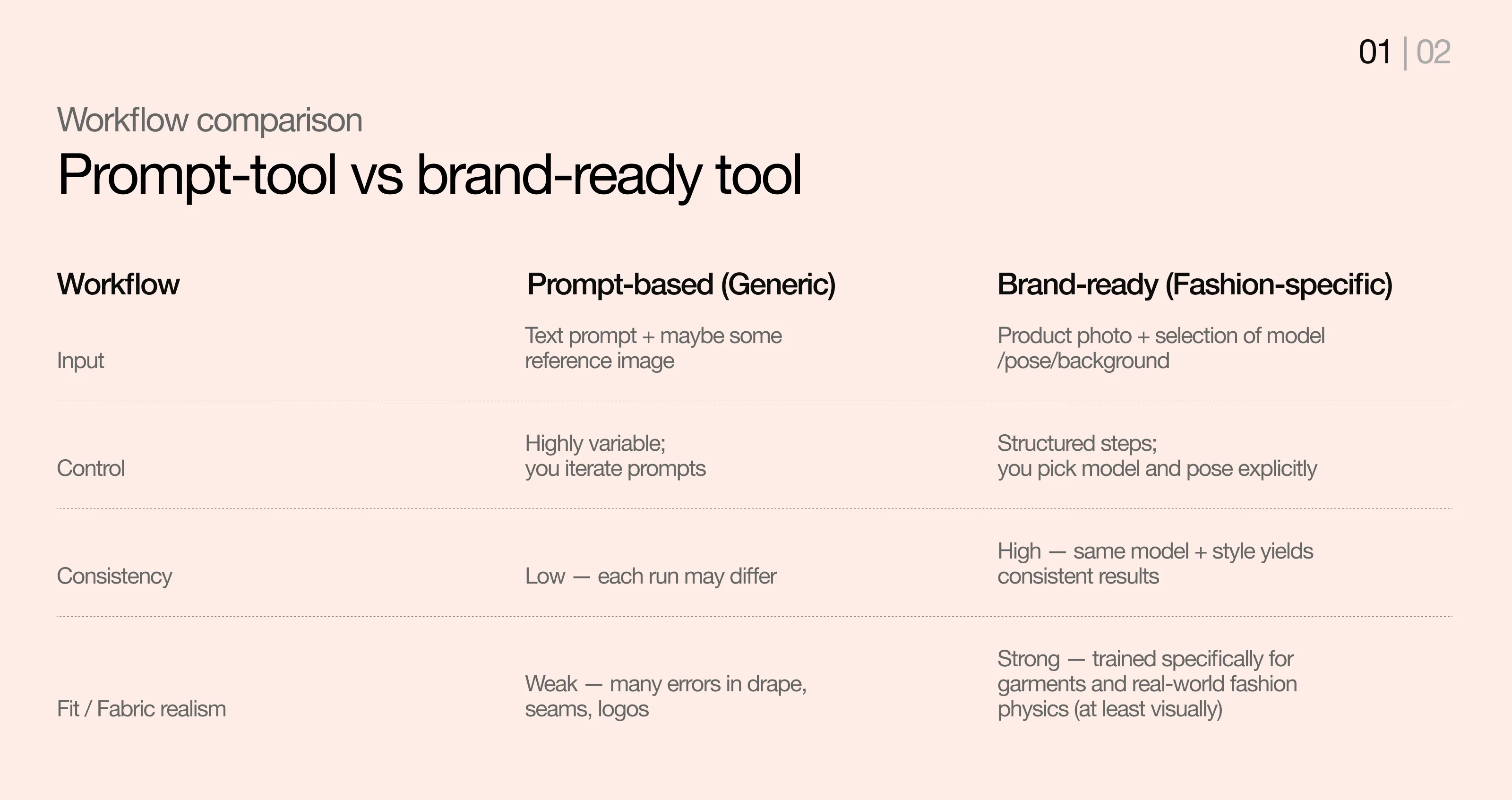
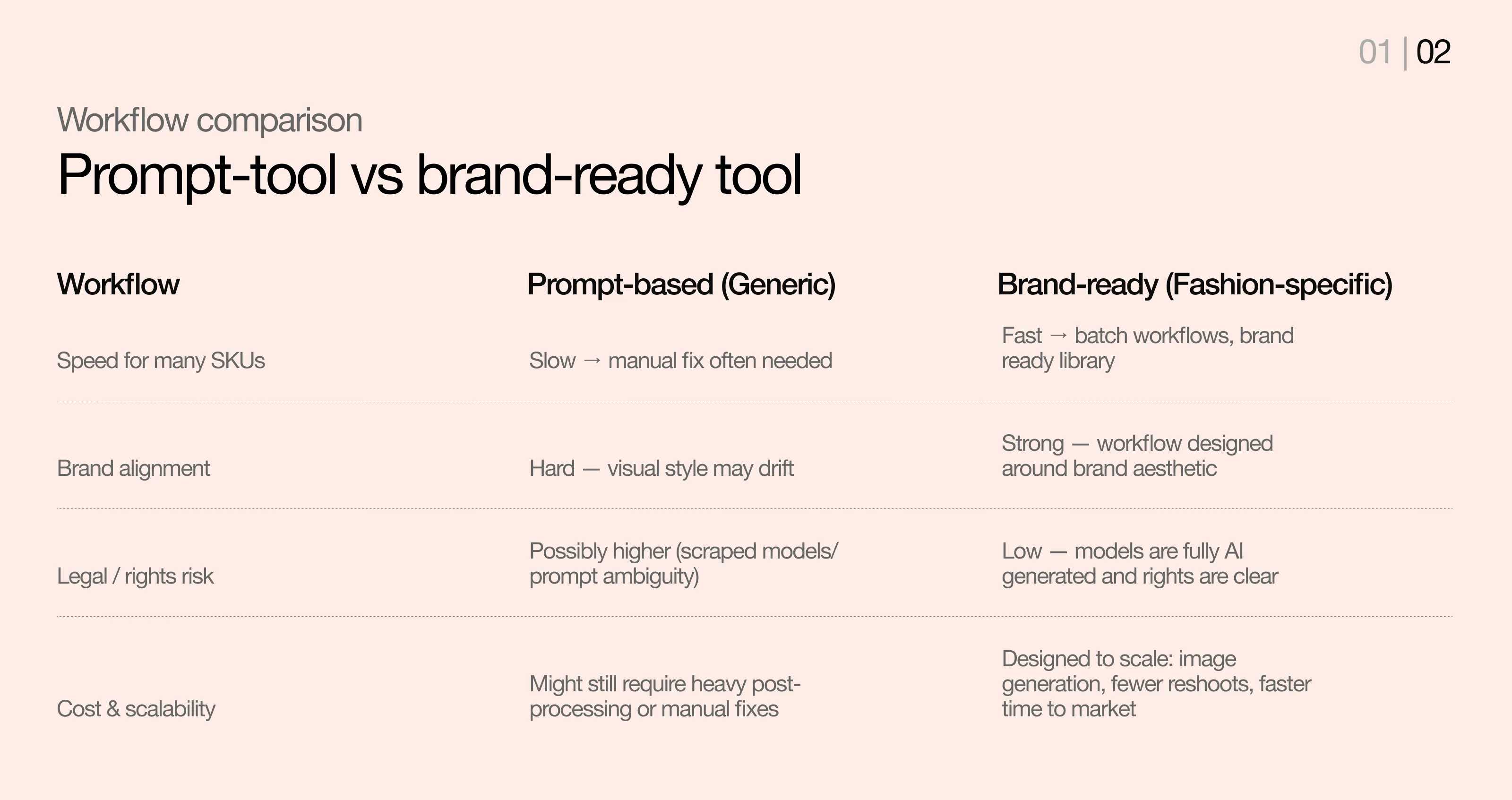
Where prompt AI powered fashion tools fall short at scale
Because I’ve built these systems, I want to point out some concrete failure modes that many brands bump into when they try “prompt-only” solutions at scale:
- A brand launches 300 SKUs and tries to generate images via prompts. 20% of images show modeling glitch (hand weirdness, warped fabric). The brand either rejects them or spends hours editing. The time savings vanish.
- Backgrounds and poses vary too much. You end up with a visual catalog that lacks cohesion, which erodes brand trust.
- The text prompts used yesterday don’t yield the same quality tomorrow, because the latent model changed or the prompt phrasings drift. That variability is a risk.
- For campaigns (hero image, ad creative, social verticals), you need multiple angles, consistent lighting, brand style. Prompt tools often give you one-off weird images, not a curated set.
- If you outsource prompt creation to a freelancer, you get manual steps anyway; you lose the automation benefit.
- Brand legal risk. If the underlying model was trained on scraped real-people or stock imagery, you might retroactively have liability. The fully AI-generated model library approach mitigates this.
In short, at small scale (one image) prompt-based may work. At large scale (catalog refresh, campaign suite, global brand) it gets flaky fast.
How the AI powered fashion workflow works at Botika
Let me walk you through, step by step, how a brand using Botika can execute an efficient workflow:
Step 1: Product photo upload
Start with any clear garment shot—flat lay, mannequin or on model. Good lighting and visible texture help the system prep your file for production. And because Botika is built for global brands, you can batch everything: full collections, multiple SKUs, poses, and backgrounds in one run. The key: clear lighting, visible seams, good fabric texture. Our system accepts these inputs and prepares for production.
Step 2: Model / Pose / Background selection
Instead of writing elaborate prompts, you choose from a curated library of models (various sizes, ethnicities, poses). You pick a background or keep your original. You choose a style (studio, location, lifestyle). This gives you deterministic control.
Step 3: Generation & Review
You hit ‘Generate’. The platform uses our fashion-trained AI engine to map the product photo onto the chosen model + pose + background, adjusting fit, lighting, drape and preserving the brand aesthetic. Because we trained on garment-specific image data, the results are much stronger than generic art-style outputs.
Step 4: Publish and reuse
Export images with usage rights, plug into Shopify or your CMS, integrate into ads, social posts and/or product pages. Since the workflow and visual style are consistent, your brand identity remains strong. The time from upload to a live image can shrink from weeks (traditional shoot) to minutes.
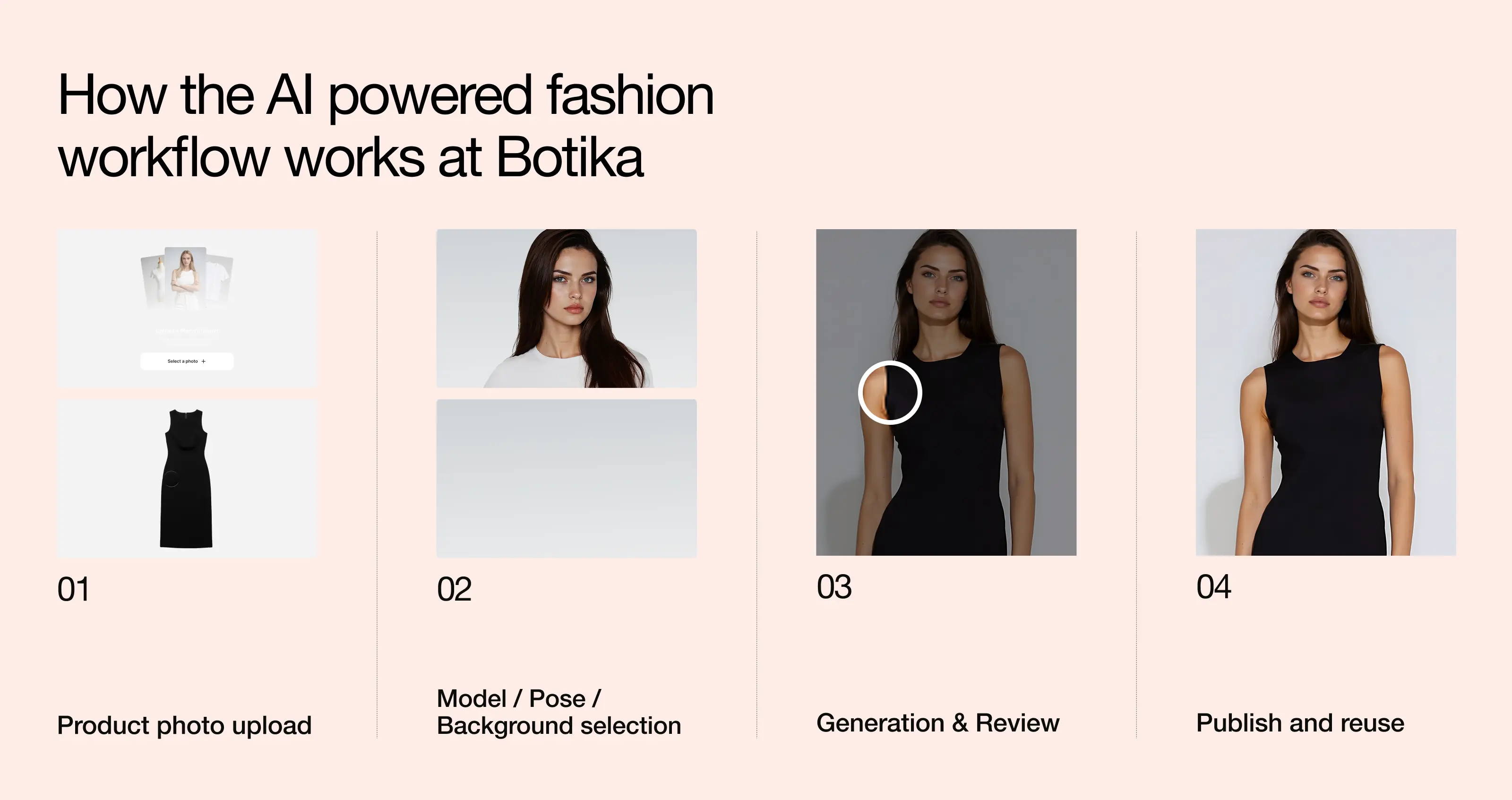
Why reliability matters more than novelty
In the world of fashion, novelty is nice. But reliability wins. Every day that a SKU sits un-photographed, it's a lost revenue opportunity. Every day your visuals are inconsistent, you erode brand trust. Every time you re-shoot or fix images, you add cost and delay.
When I explain our approach at Botika, I often say: it’s not enough to be able to generate one perfect image. You need to repeat that perfect image dozens or hundreds of times, across channels and launch contexts.
Reliability is achieved through discipline, architecture, and process. You need:
- A clean input workflow (good product photos).
- A curated, consistent model/pose/background system.
- A generation engine trained for your domain (in this case fashion).
- Quality control and batch tooling.
- Integration into your publishing stack (CMS, ad platforms, social).
When you achieve all that, you turn AI from a “cute experiment” into a “production tool”.
Scaling up: Catalog refresh, global markets, campaign modes
Let’s talk scale. What does this AI powered fashion workflow unlock for a medium to large sized fashion brand?
- Catalog refreshes
Instead of scheduling a series of studio shoots every season, you can update existing SKUs (new background, seasonal styling, alternate model variant) in bulk. - Localization
Want to show your garments on models that match different markets (US, EU, LATAM, APAC)? Choose model variants and re-generate visuals to match local audiences — without reshooting in each region. - Omnichannel formats
Hero image, mobile carousels, vertical social format, ad creatives. You can generate multiple outputs from one workflow. - Speed to market
New collection ready? Instead of waiting weeks for photoshoots, you can upload and go live in minutes/hours with brand-ready imagery. - Cost savings
No booking models, limited studio rental, fewer logistics. As our site says: brands using Botika report up to 90% reduction in visual production costs and 10x faster time-to-market.
This is what I mean by “reliable at scale”. It’s not about one gorgeous image. It’s about hundreds of gorgeous images delivered predictably, aligned with brand identity and ready for publishing.
<blogcta-2>
Final thoughts
The shift from prompt-based creation to structured AI powered fashion workflows marks a quiet but important change. Fashion brands no longer need to gamble with results, they can build visual systems that scale, stay consistent and support creativity instead of slowing it down. Because when your workflow is stable, your creativity can finally run free.
When AI creation becomes repeatable, predictable, and aligned with your brand, it stops being an experiment and starts being infrastructure. That’s the quiet revolution happening right now: creativity powered by consistency.
.webp)

